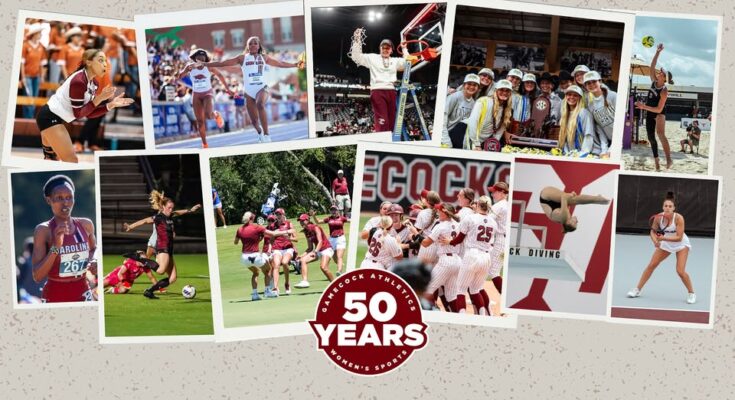The realm of college athletics, long steeped in tradition and fiercely guarded amateurism, is currently undergoing what can only be described as The Great Reimagining: A New Era of College Sports Begins. This transformative period, unfolding dramatically in mid-2025, is primarily driven by the monumental settlement in House v. NCAA, alongside the continued evolution of Name, Image, and Likeness (NIL) legislation and the expansion of the College Football Playoff. The old model, which often felt like a precarious balancing act between commercial power and collegiate ideals, has unequivocally crumbled, giving way to a more professionalized, yet still complex, landscape.
At the very core of this “Great Reimagining” is the House v. NCAA settlement, which received final approval on June 6, 2025. This landmark antitrust lawsuit has fundamentally reshaped how college athletes are compensated. Previously, athletes could only profit from their NIL through third-party deals. Now, starting July 1, 2025, universities can directly compensate athletes. This is a seismic shift, with schools permitted to share up to an estimated $20.5 million annually with their student-athletes, a cap that is projected to increase by approximately 4% each year for the next decade. This immediate and direct payment mechanism marks a stark departure from the long-held amateurism model, effectively legalizing “pay-for-play” within a structured, antitrust-compliant framework.
However, the implementation of the House settlement is not without its complexities and challenges. A significant appeal has already been filed by eight female athletes on June 11, 2025, arguing that the $2.8 billion in damages designated for former athletes violates Title IX, as men’s basketball and football players are set to receive a disproportionately larger share. This appeal has temporarily deferred the first payments, which were originally scheduled for July 1, 2025, indicating that further legal battles are almost certainly on the horizon. Additionally, concerns remain that the $20.5 million salary pool itself could constitute illegal wage fixing, as it potentially restricts high-revenue-generating athletes from earning what they might command in a truly free market. Since college athletes are not unionized, this cap isn’t the result of collective bargaining, leaving it vulnerable to antitrust scrutiny under the Sherman Act.
Beyond direct payments, the settlement also brings about other significant changes to the economic model of college athletics. Scholarship caps have been eliminated, potentially allowing for more than 115,000 new scholarships across Division I. However, new roster limits for each sport are being introduced for the 2025-26 academic year. For instance, football rosters will be capped at 105 players, up from 85 scholarship limits previously. This means while more players might receive financial aid, programs will also need to manage their roster sizes carefully. The NCAA is also eliminating 150 outdated rules to streamline benefits for student-athletes.
The oversight of this new compensation framework will fall to a new entity, the College Sports Commission LLC (CSC). This body is tasked with enforcing rules related to revenue-sharing, NIL deals, and roster limits. Furthermore, any third-party NIL deal valued over $600 will be audited to ensure it reflects fair market value. Directors from the five leading athletic conferences have already engaged Deloitte to act as an auditor, and discussions have revealed that a significant portion of past booster collective deals would have been denied for not meeting fair market value standards. This signals a move towards greater transparency and regulation in the NIL space, though disputes over valuations are expected to lead to a new, court-overseen arbitration system for athletes.
Concurrent with these financial upheavals, the College Football Playoff (CFP) has already undergone a significant expansion, moving to a 12-team format beginning with the 2024 season and continuing through 2025. The 2025-26 CFP will feature a modified seeding process where the four highest-ranked teams overall receive first-round byes, regardless of whether they are conference champions. The first-round games (seeds 5-12) will be hosted on campus, leading to a thrilling December. The quarterfinals and semifinals will rotate among the traditional New Year’s Six bowl games, culminating in the 2026 National Championship Game at Hard Rock Stadium in Miami Gardens, Florida on January 19, 2026. This expansion fundamentally changes the path to a national championship, offering more teams a realistic shot at postseason glory and increasing revenue streams for the conferences and schools involved. Discussions are already underway regarding further expansion beyond 2025, potentially to 14 or even 16 teams, as the current CFP contract expires after the 2025 season.
The landscape of conference alignment has also been dramatically altered, giving rise to “super conferences” like the expanded SEC and Big Ten. The additions of Texas and Oklahoma to the SEC in 2024 have created an even more formidable “gauntlet” within the conference, further solidifying its dominant position in college football. This relentless competition within these enlarged conferences directly impacts the CFP selection process, with the Big Ten and SEC reportedly at odds over how strength of schedule and automatic qualifiers should be factored into future playoff formats. The drive for increased media rights revenue and competitive advantage continues to fuel these realignments, creating a more consolidated and hierarchical structure within Division I athletics.
The “Great Reimagining” is not without its casualties. The Knight Commission on Intercollegiate Athletics has raised concerns about the future of collegiate Olympic sports, warning that some Division I schools are already beginning to cut teams and reduce funding in anticipation of the House settlement. As athletic departments reallocate funds to provide direct financial benefits to football and men’s basketball players – who comprise only about 15% of all Division I athletes – there’s a real fear that non-revenue generating sports will suffer. The Knight Commission advocates for significant changes to NCAA revenue distribution to protect and incentivize these “Olympic” sports, as the current formula disproportionately values FBS football, despite it generating zero dollars for NCAA revenue.
In essence, the new era of college athletics is characterized by a stark shift from a paternalistic amateur model to one that increasingly mirrors professional sports. The direct payment of athletes, the expansion of lucrative playoffs, the consolidation of power in super conferences, and the heightened scrutiny of NIL deals are all facets of this profound transformation. While it promises greater financial equity for athletes and potentially more competitive on-field products, it also introduces unprecedented legal and financial complexities, raises questions about Title IX compliance, and creates new pressures on non-revenue sports. The landscape of college sports is no longer about maintaining a façade of amateurism; it is about navigating a complex, multi-billion dollar industry that is still very much in flux, its future continually being shaped by ongoing litigation, evolving economic models, and the relentless pursuit of competitive advantage.



